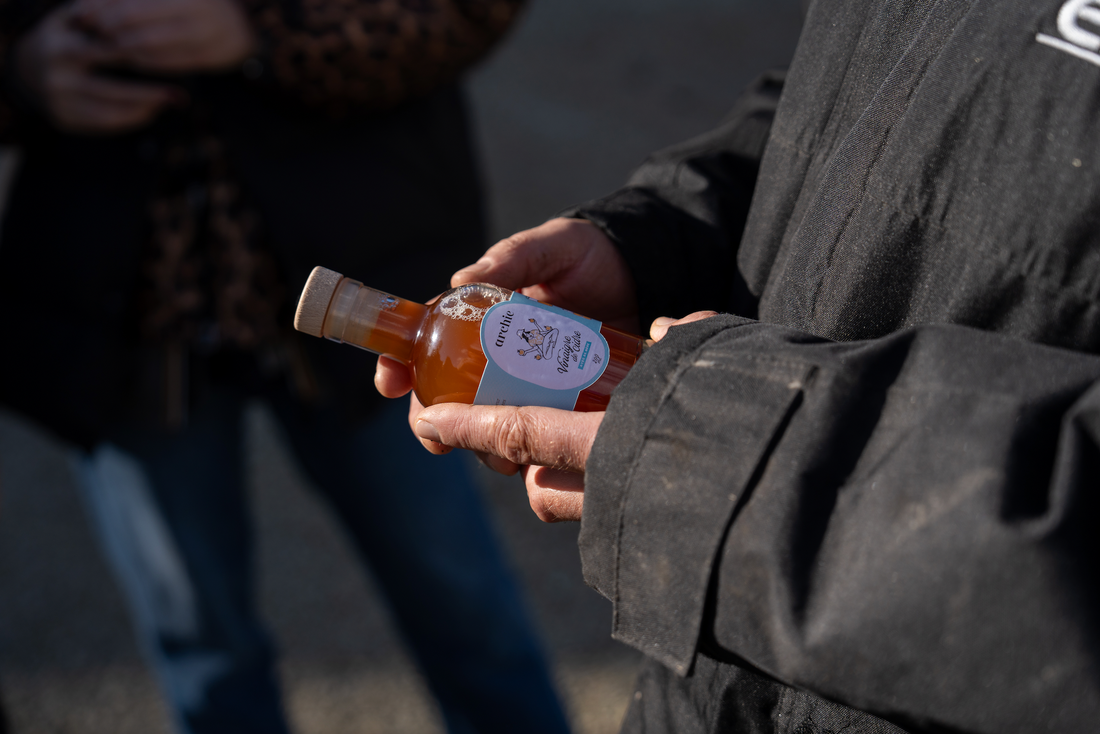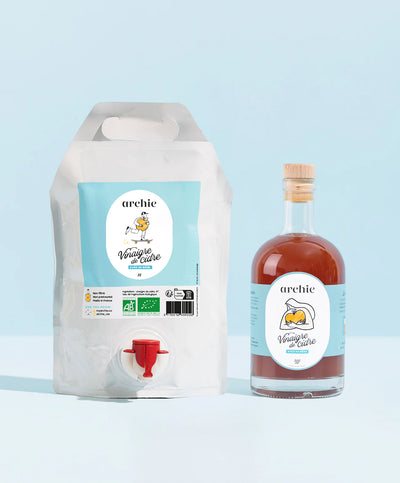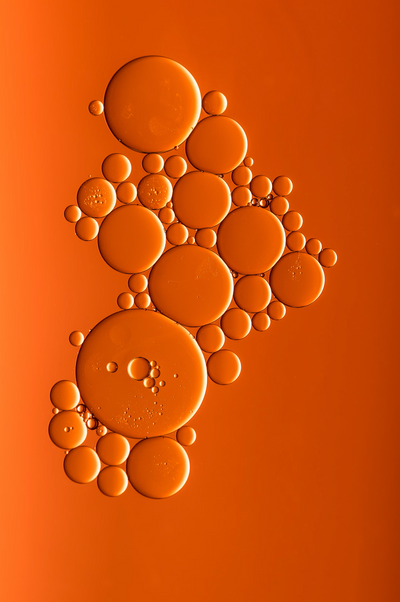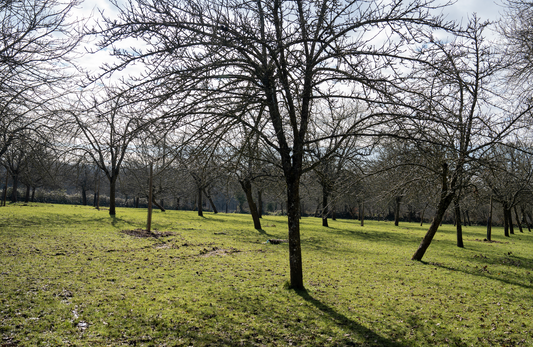Organic, unpasteurized, unfiltered apple cider vinegar… These terms all sound very nice, but what do they really mean? If you've ever hesitated over a label, wondering if you were making the right choice, this article is for you! We'll explain how to recognize a good apple cider vinegar by deciphering its production methods, its labels, and by spotting marketing traps. In short: the guide to becoming an expert on apple cider vinegar.
Organic, unfiltered, unpasteurized cider vinegar: what are we really talking about?
On the shelves, the bottles all look the same. Yet, not all cider vinegars are created equal! Here are three quality criteria to look for and what they mean.
Organic cider vinegar
Organic cider vinegar is made from apples grown without chemical pesticides, synthetic fertilizers, or GMOs. This guarantees respect for the land, but also for your health: pesticide residues can be present in processed products like vinegar.
At Archie, we select organic apples from French orchards. Choosing organic isn't a trend, it's a commitment: preserving biodiversity, supporting dedicated producers, and guaranteeing you a product that's as natural as it is delicious.
Unfiltered apple cider vinegar
Unfiltered cider vinegar retains what's known as the "mother of vinegar," that slightly cloudy film that can form at the bottom of the bottle. Not very glamorous at first glance, but that's precisely where the beneficial bacteria and enzymes reside!
Filtering makes the product clearer, "cleaner," and more visually appealing. But it also removes a good portion of the vinegar's "mother." Unfiltered vinegar is a living vinegar, richer in nutrients. And that's what's most important!

Unpasteurized apple cider vinegar
Pasteurization involves heating vinegar to kill microorganisms. Convenient for extending shelf life… but not great for preserving beneficial bacteria!
Unpasteurized apple cider vinegar is a "raw" product that retains all its enzymatic properties. It still contains natural prebiotics and probiotics, beneficial for gut microbiota balance and digestion.
A quality cider vinegar is also a matter of production method
The label "organic, unfiltered, unpasteurized" is important, but it's not enough. You also need to look at how the vinegar is produced, because that's where everything happens!
A 100% natural double fermentation
Apple cider vinegar is the result of a double natural transformation.
1. First, alcoholic fermentation : the natural sugars of the apples are transformed into alcohol, giving birth to cider.
2. Next, acetic fermentation : naturally occurring bacteria transform this alcohol into acetic acid, the main active ingredient in vinegar. This transformation occurs thanks to living microorganisms and oxygen. No need for chemical accelerators, no industrial shortcuts: just time, a little patience, air, and quality apples.
This traditional double fermentation method guarantees a richer, more complex final product, with a distinct taste… and above all, real functional properties.

At Archie, we work with Norman cider farmers who are experts in double fermentation.
Why does this artisanal production change everything?
Industrial vinegars sometimes use accelerated processes, which allow for quick, large-scale production. But this speed comes at a cost: fermentation is incomplete, and the product is often filtered, pasteurized, and standardized.
Conversely, artisanal production like Archie 's preserves the product's natural richness: the mother of vinegar, enzymes, and aromas. It's a living, raw product, without additives or preservatives.
Organic, unfiltered, unpasteurized cider vinegar: what are we really talking about?
Organic, local apples, and nothing else
Our apples come from organic French orchards, grown without pesticides. No concentrate, no compromises. Just fruit, harvested at peak ripeness, to guarantee a pure taste and optimal fermentation.

The beautiful apple trees of our centuries-old hedgerows in Normandy.
Handcrafted in the heart of Normandy
At Archie's , we let time do its work. Our vinegar is the result of a slow, double fermentation in vats, respecting traditional methods. No additives, no shortcuts. The result? A complex, balanced vinegar with a true personality.
A raw, vibrant and effective composition
Unfiltered and unpasteurized, our cider vinegar retains its mother and all its natural richness. This is what makes it a valuable ally for digestion , energy, metabolism… and taste. Because yes, good vinegar can be smelled, seen, and savored.
You now have all the information you need to choose a quality cider vinegar. Enjoy your tasting, and long live living vinegar!















